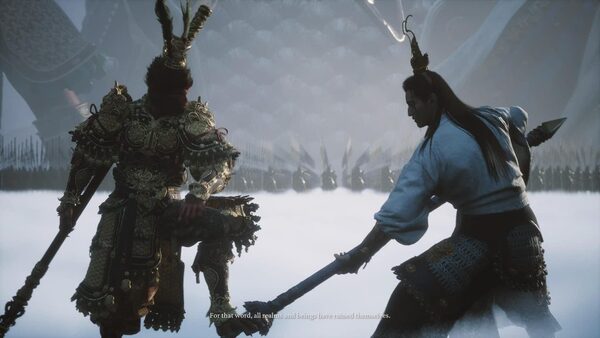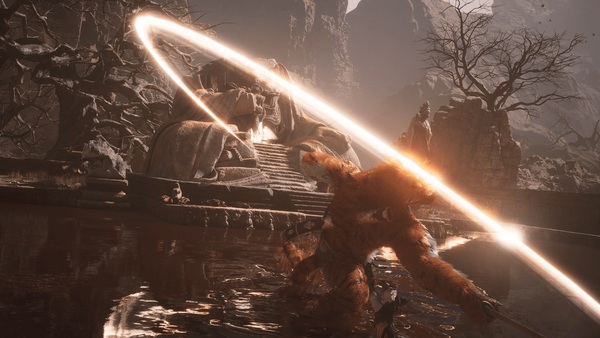Popular Now
Introduction
Black Myth: Wukong has captured global attention long before its official release, not just for its stunning visuals but for its daring reinterpretation of Chinese mythology and its ambitious action-RPG mechanics. Developed by the Chinese indie studio Game Science, the game draws from the classic novel Journey to the West, placing players in the role of the legendary Monkey King, Sun Wukong. But beneath the surface lies a game that merges Eastern storytelling with modern Souls-like combat and cinematic world-building. This article explores the deeper layers of the game’s design, narrative depth, and how it positions itself in a competitive genre dominated by giants like Elden Ring and God of War.
1. Reimagining Chinese Mythology for a Global Audience
At the heart of Black Myth: Wukong lies its source material—Journey to the West. This 16th-century novel is one of the most influential pieces of Chinese literature, and Sun Wukong is arguably its most iconic character.
Rather than following the novel beat-by-beat, the game explores deeper and darker interpretations of its themes. Mythological creatures, heavenly beings, and underworld spirits are presented with a haunting realism that feels more akin to dark fantasy than cartoon folklore. This gritty tone allows Game Science to reinterpret well-known tales in a way that resonates with both Eastern and Western audiences.
2. Sun Wukong as a Complex Protagonist
Unlike other portrayals of the Monkey King as a trickster or comic figure, Black Myth presents a more solemn, warrior-like version of Wukong.
He’s not merely mischievous—he’s thoughtful, burdened by fate, and often forced to question his purpose. His powers—including transformation, cloud-stepping, and staff mastery—are not just tools but expressions of his internal struggle. This deeper character study adds narrative weight to what could have been a simple action-adventure.

3. A Soulsborne Influence Done with Purpose
The combat system is heavily inspired by Souls-like games. Players must learn enemy patterns, manage stamina, dodge at perfect moments, and strike with precision. However, Black Myth: Wukong offers a faster-paced variation.
The staff’s fluid movements and combo potential give the player more offensive versatility than many other Soulsborne titles. Parrying, transformation abilities, and spell-like skills allow for adaptive strategies, encouraging players to master different playstyles.
4. Transformation Mechanics and Tactical Freedom
One of the game’s most unique elements is the ability to transform into creatures—wolves, insects, and mythical beasts. These forms not only offer new ways to attack but allow access to hidden areas or alternative tactics.
Each transformation represents a creative solution to a combat or environmental challenge, promoting experimentation. Rather than brute-forcing a fight, players can opt for stealth, mobility, or magical superiority.
5. Environmental Storytelling and Level Design
The environments in Black Myth: Wukong are not just backdrops; they are narrative devices. Abandoned villages, misty mountains, crumbling temples—all tell silent stories about the world’s decay, history, and spiritual imbalance.
Each zone features vertical level design, secrets hidden off the main path, and atmospheric cues. Whether it’s a glowing lantern in a cave or distant temple bells, the world feels alive with meaning.
6. Enemy Design as Cultural Commentary
Bosses and mini-bosses in the game draw directly from Buddhist and Taoist mythology, with grotesque but fascinating interpretations. Creatures like the White Bone Spirit, spider demons, or the Bull Demon King aren’t just obstacles—they embody spiritual challenges, moral lessons, or corruptions of natural order.
Every enemy design is layered with symbolism. The grotesque forms, dialogue, and attack styles reflect deeper meanings from Chinese cosmology, often challenging players to think beyond their sword.
7. Visual Fidelity and Unreal Engine 5 Power
From particle effects to facial animation, Black Myth: Wukong is among the most visually impressive games ever revealed. Built with Unreal Engine 5, it features detailed fur physics, lighting systems, and fluid motion capture.
The graphical commitment isn't just for show—it deepens immersion. Raindrops hitting armor, leaves swirling in battle, or mist rising from mountain peaks—all contribute to a cinematic, next-gen experience that supports its mythic tone.
8. Audio Design and Traditional Music Integration
The soundscape of Black Myth: Wukong is meticulously crafted, integrating traditional Chinese instruments like the erhu and guzheng into its soundtrack. The music shifts based on environment and combat, creating tension or serenity as needed.
Voice acting, both in Mandarin and other localized languages, brings emotional depth to the narrative. Even enemy grunts, spell effects, and ambient wildlife sounds are designed to root players firmly in this ancient fantasy world.

9. Cultural Pride and International Game Development
Black Myth: Wukong is more than a game—it’s a cultural milestone. For years, Chinese games have been viewed through the lens of mobile gaming or MMO markets. This title marks a new era of premium, globally competitive Chinese-made single-player experiences.
Game Science has been vocal about their intent to prove that Chinese mythology and talent can compete with Western IPs. Their use of authentic cultural elements is a bold counter to generic fantasy tropes, and the success of trailers and demos suggests a shift in global perception.
10. Challenges Ahead and Community Expectations
With high expectations come high risks. Some fans worry that delays or over-promises could hurt the final product. Others debate whether the Souls-like approach alienates casual players who want more narrative or platforming variety.
However, most fans agree that Black Myth: Wukong is poised to make a major impact if it delivers even half of what its trailers promise. The game could become not just a great action RPG, but a watershed moment in how Eastern stories are told through modern game design.
Conclusion
Black Myth: Wukong isn’t just another action-RPG. It’s a cultural retelling, a visual masterpiece, and a combat-driven epic that redefines what a game based on mythology can be. By combining Soulsborne mechanics with rich narrative tradition and state-of-the-art technology, it stands out in a genre filled with giants. As it moves closer to release, Black Myth: Wukong carries with it the hopes of a nation’s storytellers—and the excitement of a global audience ready for something truly mythic.

















